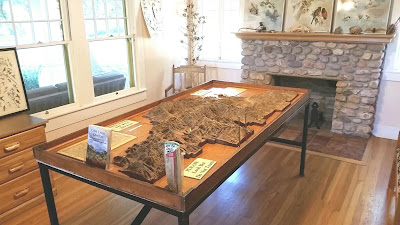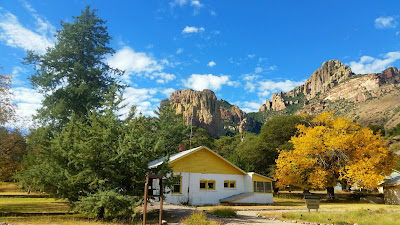10/7/2017
From Canyon De Chelly we consider heading to the south rim of the Grand Canyon. Back in 1999 we spent 4 days backpacking down to Phantom Ranch and back up so this would be a return trip. However, it would be a long day, taking us a couple hundred miles out of our way, and we weren't sure about an intermediate stop (no Internet for research). So, we headed south to a place we didn't have time to see back in 99, Petrified Forest Nat'l Park.
After leaving the Navajo Reservation, we hit I-40 heading west for a few miles. The north entrance has it's own exit (311) with a visitors center and the usual stuff found in the larger parks, gift shop, cafe and even a gas station.
There's a 26 mile road running through the park from the north entrance to the south entrance. It's the only paved road in the park, taking you to all the overlooks and attractions. All the parking area's can accommodate RV'S and since we were staying at the south entrance, we toured part of the park on the way to our camping spot.
Here's some pictures...
There are two rock shops at the south entrance that provide free RV parking. The petrified wood is so plentiful they use it to define the bounds of the parking area.
The Painted Desert is part of Petrified Forest NP.
The direction of the sun's rays has a profound effect on the colors.
Petified Forest is the only national park to preserve a section of the historic Route 66.
An opportunist or survivalist?
The ruins at Puerco Pueblo.
Hard to imagine this tree lived over 200 million years ago.
The colors are striking.
Blue Mesa, the brown on top of the mounds are ancient river pebble left behind after the midstone has eroded away.
Blue Mesa is the second oldest layer in the park and consists of gray, blue, purple and green mudstone and minor sandstone beds.
Sunset over Petrified Forest Nat'l Park.
Coming next, Head of the Ditch?!?!..............









































































